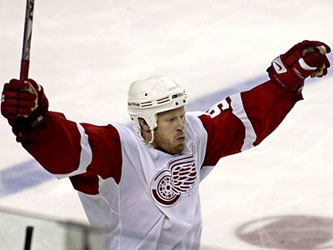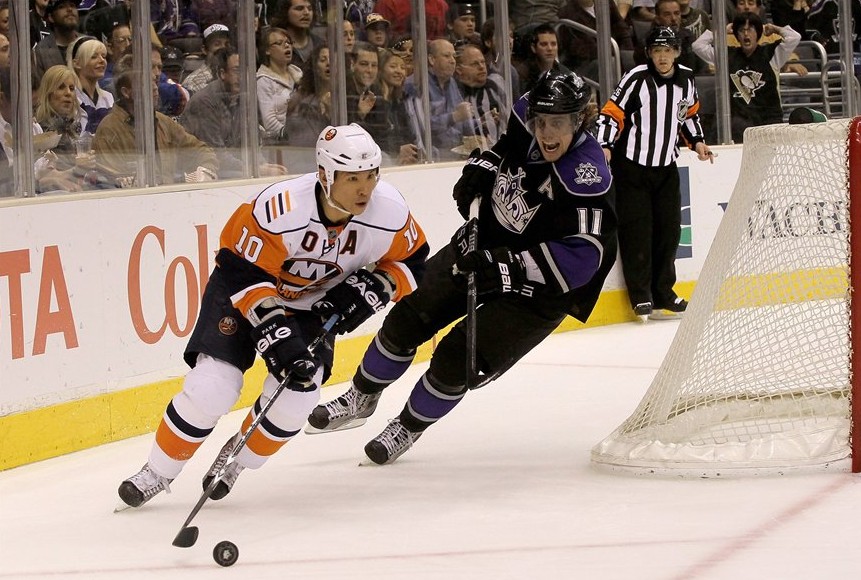Detroit Redwing’s Franzen Out With ACL Injury

Detroit Redwing’s forward, Johan “The Mule” Franzen, will be out at least 4 months due to an injury to his left knee- a torn ACL ligament. Franzen was injured Detroit’s home opener Thursday night, although it is not clear when it happened. According to Wings GM Ken Holland, “I’m a little surprised. He finished the game, said his knee was bothering him, didn’t know exactly when he injured it. The doctor said it happened before he scored his goal. He woke up this morning with his knee swollen and full of fluid.’’ Franzen had scored the game winning goal in the second period of the game.
The knee is essentially a modified hinge joint located where theend of the thigh bone (femur) meets the top of the shin bone(tibia). Four main ligaments connect these two bones:
- Medial collateral ligament (MCL) — runs along the inner partof the knee and prevents the knee from bending inward.
- Lateral collateral ligament (LCL) — runs along the outer partof the knee and prevents the knee from bending outward.
- Anterior cruciate ligament (ACL) — lies in the middle of theknee. It prevents the tibia from sliding out in front of the femur,and provides rotational stability to the knee.
- Posterior cruciate ligament (PCL) — works with the ACL. Itprevents the tibia from sliding backwards under the femur.
The ACL and PCL cross each other inside the knee, forming an “X.”

The ACL is the most commonly injured ligament in the knee. It can be torn when a twistingforce is applied to the knee while the foot is firmly plantedon the ground or upon landing, or from adirect blow to the knee, usually to the outside of the knee, as may occur during afootball tackle. The most common sports where ACL injuries occur are soccer, basketball, tennis, volleyball and skiing. ACL injuries are more common in women for a variety of reasons including anatomical difference and the effect of female hormones on the joints.
The symptoms of a torn ACL include:
- An audible pop or crack at the time of the injury
- Inability to stand of the leg with a feeling of joint instability
- Extreme pain and knee tenderness
- Knee swelling
- Decreased ability to move the knee
As with most such injuries, care immediately after the injury consists of RICE therapy-
Rest, Ice, Compression, and Elevation). Medical attention should be sought to thoroughly evaluate the injury. If the tear is mild and not completely through the entire ligament, conservative management including immobilization with a knee brace and physical therapy may surfice. If the ligament is completely torn, it can not be repaired, but must be replaced, usually during arthroscopic surgery.

























0 comments